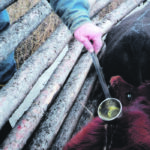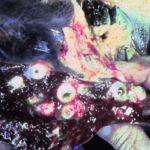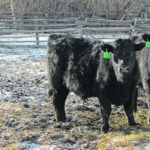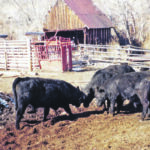Plants will be started in vertical frames and then lowered into large holes to reduce energy costs and space limitations
Traditional produce farming has seen a slow transition from flat fields and greenhouses to vertical production. Now an eastern Canadian company wants to divert farm and garden producers’ attention in the opposite direction — deep inside the ground. GreenForges of Montreal intends to tap the benefits of vertical farming, such as year-round production, high quality […] Read moreStories by Freelance writer

Scientists reveal key to growing pod-shatter resistant variety
A group of Chinese researchers has identified the candidate gene that lends shatter resistant variety OR88 that trait
Rapeseed harvesting losses caused by pod-shatter may be eliminated after scientists said they have unlocked the secrets to a resistant variety’s strength. Chinese scientists have studied a highly rpod-shatter resistant rapeseed variety called OR88, and identified the reasons behind its mysterious durability. The scientists say the research promises to provide breakthroughs in the development of […] Read more
Agritechnica becomes latest casualty
After being postponed, the world’s largest farm technology show has been cancelled for February 2022
Organizers of the world’s biggest farm machinery show, Agritechnica, have cancelled the already postponed event for 2022 due to increased COVID-19 regulations and cases. The DLG, German Agricultural Society, has officially cancelled the event that had already been postponed from its traditional November 2021 date to Feb. 27, 2022. Agritechnica normally attracts 2,800 exhibitors and […] Read more
Research shows value of concentrated farming
Three pillars: High yield production by any means; low yield production to support farmland species; habitat restoration
What if greater productivity could be achieved on less farmland so that more space is dedicated to natural habitats, richer biodiversity and greater opportunities for net zero emissions targets? That concept of retaining and expanding habitats to create natural landscapes in a high-yield agricultural environment (a management practice also known as land sparing) is gaining […] Read more
Integrated approach helps manage herbicide resistance

Do farm’s lice bite or suck?

Good lice control depends on type, timing

Cattle, deer liver flukes cause rising problems
Deer liver flukes in particular are becoming a more common problem in cattle herds, and treatments can prove tricky for producers
Liver flukes start their life cycle in tiny freshwater snails but end up in the livers of grazing animals, where they mature and pass their eggs. Feces containing fluke eggs must land in water for transmission to snails. If the animals’ feces lands on dry ground, the eggs die. Cattle generally get two types of […] Read more
Well-fed bulls make good breeders
Proper nutrition for young animals has been found to be vital for breeding success, but it should start before weaning
Years of research have shown that bulls with larger testicles tend to have more sperm and can settle more cows than bulls with small testicles. Also, well-fed bulls generally reach puberty quicker than undernourished bulls. Dr. John Kastelic, a veterinarian and professor in cattle reproductive health at the University of Calgary, has done a lot […] Read more
Breeding season common time for bull injuries
A penile hematoma, also known as broken penis, is an injury that most often occurs in bulls that breed cows in pasture
Bulls occasionally get injured when fighting or breeding. Jennifer Pearson, assistant professor of production animal health at the University of Calgary, said most injuries happen during breeding season. “These injuries fall into two categories: reproductive injuries and musculoskeletal injuries, usually feet and legs. “A common reproductive injury is a penile hematoma, often called broken penis. […] Read more



